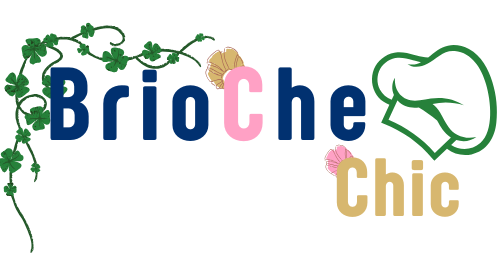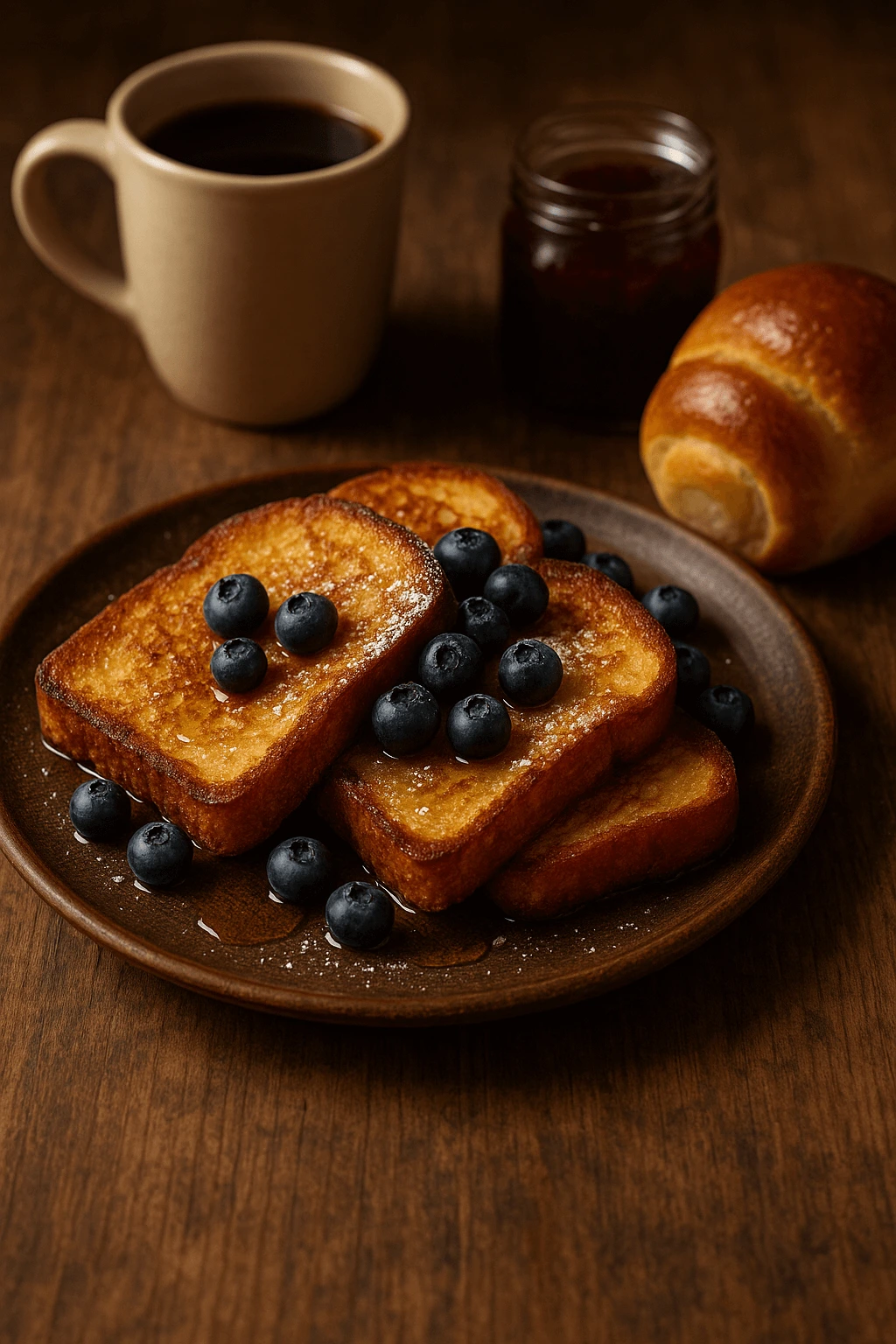perfect brioche
Let it rest Pain perdu, or “French toast” in English, is a beloved and timeless dish that holds a special place in many cultures.
French cooks first created this dish in ancient times to repurpose stale bread, turning leftovers into a smart and resourceful meal
“Pain perdu” means “lost bread.” It refers to saving bread that would have been thrown away and transforming it into something delightful and satisfying.
6 Secrets to Making Perfectly Flaky and Irresistible Raisin Buns at Home
Anchor: learn more about enriched doughs
The preparation of pain perdu
is simple yet versatile, allowing for various adaptations depending on personal tastes and regional preferences. With its rich history and broad appeal, Pain Perdu can be made with many types of bread. From classic white bread to brioche or even gingerbread, each brings a unique twist to the dish..
before being cooked to golden perfection in a skillet.
The result is a soft, custard-like interior with a crispy, caramelized exterior.
This dish can be enjoyed in multiple ways, either as a sweet treat or a savory dish. Sweet variations often feature toppings such as fresh fruits, whipped cream, honey, or a dusting of powdered sugar.
On the savory side, pain perdu can be paired with ingredients like cheese, ham, or even herbs, transforming .
it into a more substantial meal.
Pain perdu
is not just a comforting breakfast or brunch option; it also serves as a nostalgic reminder of home cooking.
with each bite evoking warmth and a sense of indulgence.
Its simplicity in ingredients and method of preparation .make it a versatile dish, perfect for any time of day.
Though many countries have their version of this dish, pain perdu stands out for its rich French history and the elegance.
with which it elevates a humble slice of bread into a decadent experience.
Whether served as a special treat on a weekend morning or a satisfying dessert after a meal.
pain perdu continues to delight palates around the world, offering a delicious taste of both history and innovation in each bite.
French Toast (Pain Perdu)perfect brioche:
For 6 servings
Preparation Time: 30 minutes
Cooking Time: 15 minutes
Storage: To be consumed immediately
Equipment:
Silicone mat
Serrated knife or bread knife
Ingredients for 6 servings:
- 6 slices of bread, about 1.5 cm thick
- 200 g whole milk
- 60 g eggs (approximately 2 eggs)
- 20 g butter
- 30 g sugar
Instructions for French Toast (Pain Perdu):
- Prepare the bread:
Slice 6 pieces of bread about 1.5 cm thick using a serrated or bread knife. Opt for slightly stale bread, as it will absorb the custard mixture better without becoming too soggy.
- Make the egg mixture:
In a large bowl, whisk together 200 g whole milk, 60 g eggs (approximately 2 eggs), and 30 g sugar. - You can add a little vanilla or salt for extra flavor, but this is optional.
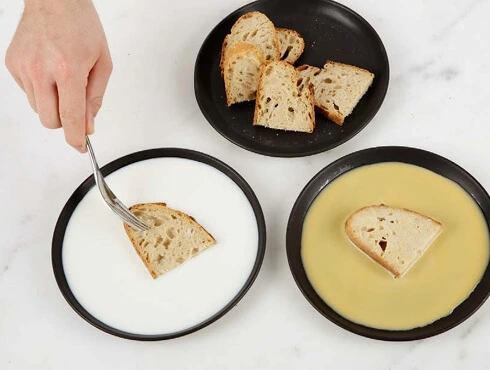
- Heat the pan:
Melt 20 g of butter in a pan over medium heat, making sure it evenly coats the bottom. - The butter will give the bread slices a nice golden color.
- Dip the bread:
Dip each slice of bread into the egg mixture, soaking both sides thoroughly but avoiding making it too soggy.
- Cook the bread slices:
Place the soaked bread slices in the hot pan and cook for about 3-4 minutes on each side, or until golden and slightly crispy.
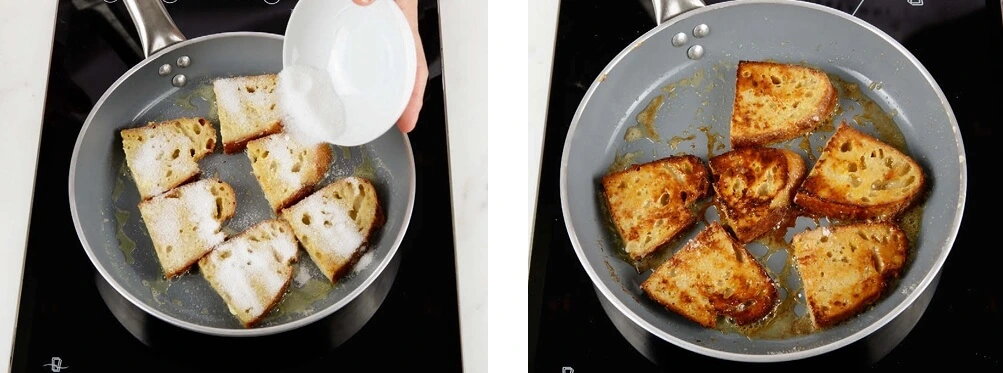
- Serve:
Serve immediately while the slices are warm and golden. You can top them with fresh fruit, a dusting of powdered sugar, or even maple syrup for a sweet touch.
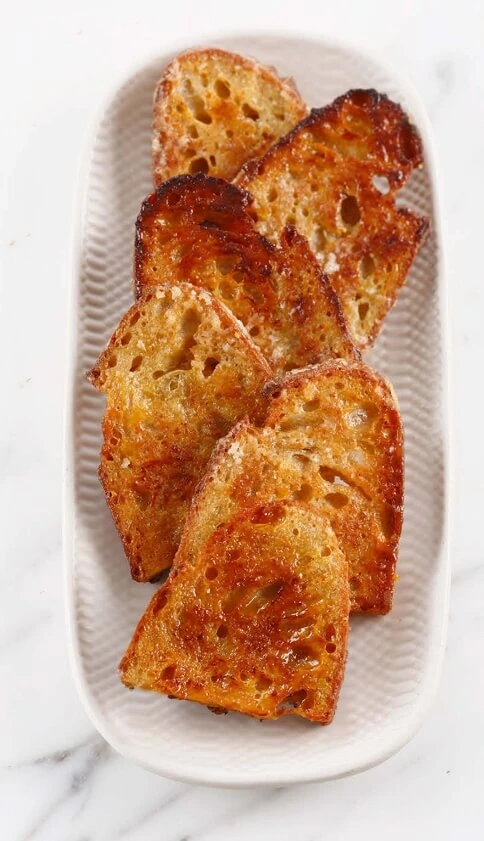
Tips:
- Generously sprinkle For a richer taste. add a pinch of cinnamon or nutmeg to the milk and egg mixture.
- Feel free to experiment with different types of bread, such as brioche or white bread, for an even more indulgent result.
- You can add vanilla beans or vanilla extract. to your custard mixture and dip the bread into a vanilla custard or another flavored custard before cooking for an extra flavor boost.
- You can replace the bread with brioche or gingerbread (nothing goes to waste!). but be mindful of the sugar already present in these types of bread.
- You can toast the bread, brioche, or other types of bread before preparing the French toast for a different texture and flavor.
Conclusion:
Gradually add Pain Perdu, or French Toast, is a versatile and timeless. dish that combines simple ingredients to create a comforting and indulgent treat.
Whether served as a sweet breakfast or a savory brunch option, this dish can be easily adapted to suit various tastes and preferences.
The magic of French toast lies in its ability to transform stale or leftover bread into something luxurious. with its golden exterior and soft, custardy interior.
With its rich history and broad appeal, Pain Perdu can be made with many types of bread. From classic white bread to brioche or even gingerbread, each brings a unique twist to the dish.
The addition of flavorful ingredients like vanilla. cinnamon, or nutmeg enhances the richness, making each bite an experience to savor. Whether you enjoy it with fresh fruits, syrup, powdered sugar, or a savory touch, there are endless possibilities to customize this dish.
King Arthur Baking: What Makes Brioche Different
Anchor: brioche dough explained
Questions & Answers:
1. Can I use any type of bread for Pain Perdu?
Yes, you can use various types of bread for Pain Perdu. While the classic choice is white bread, other options like brioche, whole grain, or even stale baguettes work wonderfully. Brioche, with its soft and rich texture, will create an even more decadent version.
You can also use gingerbread, which adds a lovely spiced flavor. Just remember to adjust the sugar amount because the bread is already sweet.
2. How can I make my Pain Perdu more flavorful?
There are several ways to boost the flavor of your Pain Perdu. Adding vanilla extract or using a vanilla bean in the custard mixture will bring a lovely aromatic depth. You can also incorporate spices like cinnamon or nutmeg for warmth and a touch of complexity.
Another option is to infuse your milk with other flavors. such as orange zest or almond extract, before adding it to the egg mixture.
3. Can I prepare Pain Perdu in advance?
While Pain Perdu is best enjoyed right after cooking, you can prepare the custard mixture ahead and keep it refrigerated for a few hours.
However, the bread should be dipped and cooked right before serving to maintain its crispy. golden exterior and soft, custard-filled interior.
4. Can I make Pain Perdu savory instead of sweet?
Absolutely! To make a savory version of Pain Perdu.
you can skip the sugar in the custard and add savory ingredients like herbs, cheese, or even cooked ham.
This makes for a delicious brunch or lunch option and can be topped with things like poached eggs or sautéed vegetables.
5. How do I achieve the perfect texture for my Pain Perdu?
The key to perfect French toast lies. in the balance between soaking the bread and cooking it to golden perfection. Be sure not to soak the bread too long, or it will become soggy. The custard should be absorbed.but the bread should still hold its shape. Cooking on medium heat allows for a crisp outside while keeping the inside soft and custardy.
6. Can I make a healthier version of Pain Perdu?
Yes, you can easily make a lighter version ,of Pain Perdu by using whole-grain or gluten-free bread.as well as swapping whole milk for a lighter option like almond milk or oat milk.
You can reduce the sugar, content or substitute it with natural sweeteners like honey or maple syrup
. To reduce the fat, you can use a non-stick pan with less butter or opt for cooking the French toast on a griddle.
In conclusion, Pain Perdu is a delightful dish that offers endless customization options.
whether you prefer it sweet or savory, rich or lighter. It’s a dish that showcases the beauty of simplicity in cooking.with the ability to create something extraordinary from the most basic ingredients. So, the next time you have leftover bread, why not give Pain Perdu a try? The possibilities are endless, and the result is always a crowd-pleaser.
